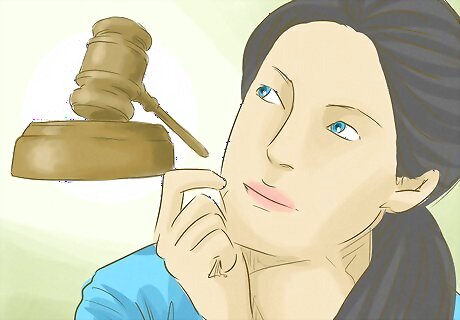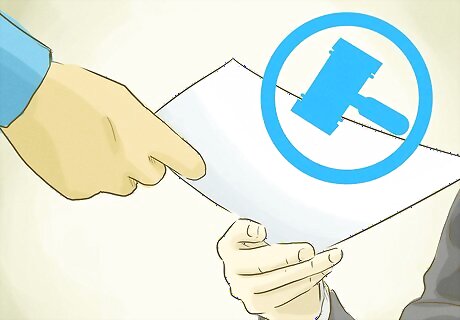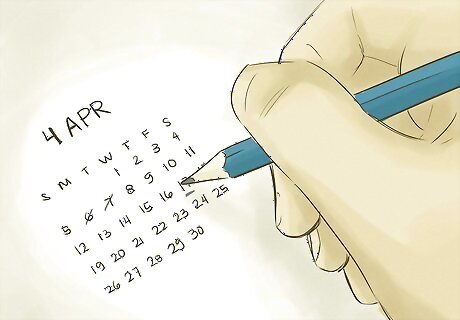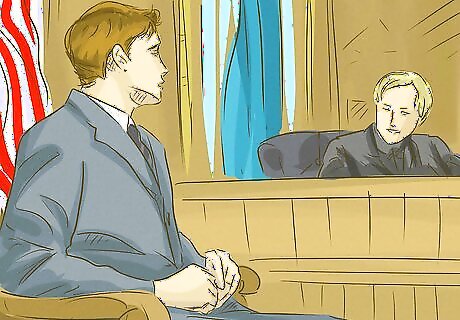
views
Preparing to File

Identify your reasons for dissolving the restraining order. You should consider carefully before having a restraining order dissolved. Once it is dissolved, then you will not be able to get it back without going through the entire process for a new restraining order. No one can tell you whether your reasons are appropriate, but you should give it considerable thought. Alternately, if you are the defendant, then you may wish to have the restraining order dissolved because you think it was entered improperly or is no longer needed. For example, you may have moved on with your life or received necessary treatment (for domestic violence or alcohol/drugs).

Understand the consequences of dissolving the restraining order. If you dissolve a restraining order, then you lose the ability to have the defendant arrested simply for violating the order. Instead, the defendant can only be arrested if the police deem it necessary. You may also have to dismiss all criminal complaints filed against the defendant.

Meet with a lawyer or victim advocate. If you have doubts about dissolving a restraining order, you should meet with someone experienced in the field and ask questions. You may want to contact an attorney or a victim advocate. To find an experienced family law attorney, you can visit your state’s bar association, which should run a referral program. If you cannot afford a lawyer, then you may want to reach out to a local legal aid organization. Legal aid organizations provide free assistance to low-income people. To find a legal aid organization near you, use this Locator and enter your zip code.

Understand the factors a court considers. Courts will consider different factors in determining whether there is “good cause” to dissolve the restraining order. The touchstone of the inquiry is whether there has been a “change of circumstances” sufficient to justify dissolving the restraining order. The factors a court considers may include: The victim’s consent. If the victim voluntarily consents to dropping the restraining order, then the court should lift the restraining order. The victim’s fear of the defendant. If the victim fears the defendant, then the court may consider leaving the restraining order in place, as it helps the victim stand up to the defendant. The nature of the relationship between the parties. Here, the court will consider the capacity of the abuser to continue to control the victim. If the two parties have children together, then a court may find it inappropriate to dissolve the restraining order. Contempt convictions. If the abuser violated the restraining order, then the judge can consider those violations as proof that the abuser has not broken the cycle of violence and circumstances have not sufficiently changed. Other violent acts. If the defendant has acted violently toward third parties (or the victim), then the court may find that the victim needs continued protection. Involvement with drugs and alcohol. In most cases, drugs and alcohol play an important role in abuse. If the defendant continues to use drugs or alcohol, then the court may find that the victim still needs protection. Domestic violence counseling. If the defendant has engaged in counseling, then the court might consider this factor weighing in favor of dissolving the restraining order. Defendant’s age and health. In some situations, the defendant’s age or infirmity would support dissolving a final restraining order. Victim’s good faith. The court will look to see whether one party misused restraining orders as part of a divorce action. Protection orders in other jurisdictions. The court may consider whether courts in other jurisdictions have entered restraining orders protecting the victim from the abuser. Any other relevant factor.

Meet with a state worker, if required. Some states require that the victim meet with a state employee to talk. New Jersey requires that you meet with Family Intake to discuss the reasons why you want to dissolve the restraining order. The worker will also counsel the victim on their rights and the ramifications of the dissolution of the restraining order. The purpose of meeting with an intake worker is to make sure that the victim is not seeking dissolution because of coercion or duress.
Filing to Dissolve the Restraining Order

Get the appropriate forms. Most states have “fill in the blank” forms that you can use in order to file a motion to dissolve a restraining order. The name of the form will differ depending on the state and the court. You should visit the court which entered the restraining order and ask for the forms. In Nevada, the form is called a “Motion to Dissolve.” You will also need to fill out a “Confidential Information Sheet.” PDFs for all forms can be found at this Self Help website. In Florida, you will need to fill out a “Motion to Dismiss.” In Nebraska, the form is called a “Motion to Vacate and Set Aside and To Dismiss.” The form is available here. In Massachusetts you would use the “Plaintiff’s Motion to Modify or Terminate Abuse Prevention Order.” A PDF is available here.

Fill out the forms. The forms may ask for slightly different information, depending on your state. However, most forms will ask for similar kinds of information: the names of each party the date on which the restraining order was entered the reasons why the restraining order should be dissolved

Sign the form. Check to see whether your motion needs to be notarized. Some states will require that you sign in front of a notary. Notary publics can be found at large banks or at the courthouse. Be sure to bring sufficient personal identification, such as a valid driver’s license or a passport.

File the motion. Make several copies of your motion and take them all to the court clerk to file. There might be a filing fee, although many courts do not charge one when dealing with restraining orders. If there is a filing fee, then ask for a fee waiver if you cannot afford the fee. Make sure that all of your copies are stamped.

Get a hearing date. You should ask the clerk for a hearing date. You may be responsible for notifying the other party of the hearing date and time when you serve notice of your motion. Courts will differ as to how they assign hearing dates. Some courts will mail all parties the date and time. Others will have you fill out a Notice of Hearing form. Ask the court clerk.

Serve notice on the other party. You will probably need to serve a copy of the motion on the other party. To do so, you can use your county’s sheriff to serve notice. Ask the court clerk about other acceptable methods, such as mailing or e-mail notice.

Attend a hearing. You may have to attend a hearing. At the hearing, both parties will be allowed to present evidence. Hearing procedures will vary, depending on the court and on whether the motion to dissolve the restraining order is contested. If the defendant brings the motion to dissolve the restraining order and the victim objects, then the defendant should be prepared to present evidence showing that a change of circumstances has taken place since the original restraining order was entered. The victim will also be able to present evidence as to why the restraining order should not be dissolved. Evidence can take the form of testimony by the parties, witness testimony, and documentary evidence. If the victim brings the motion to drop the restraining order, then the court might inquire only as to whether or not the motion is being brought voluntarily. If the court is satisfied that the victim is acting voluntarily, then in some states the judge has to dissolve the restraining order.

















Comments
0 comment